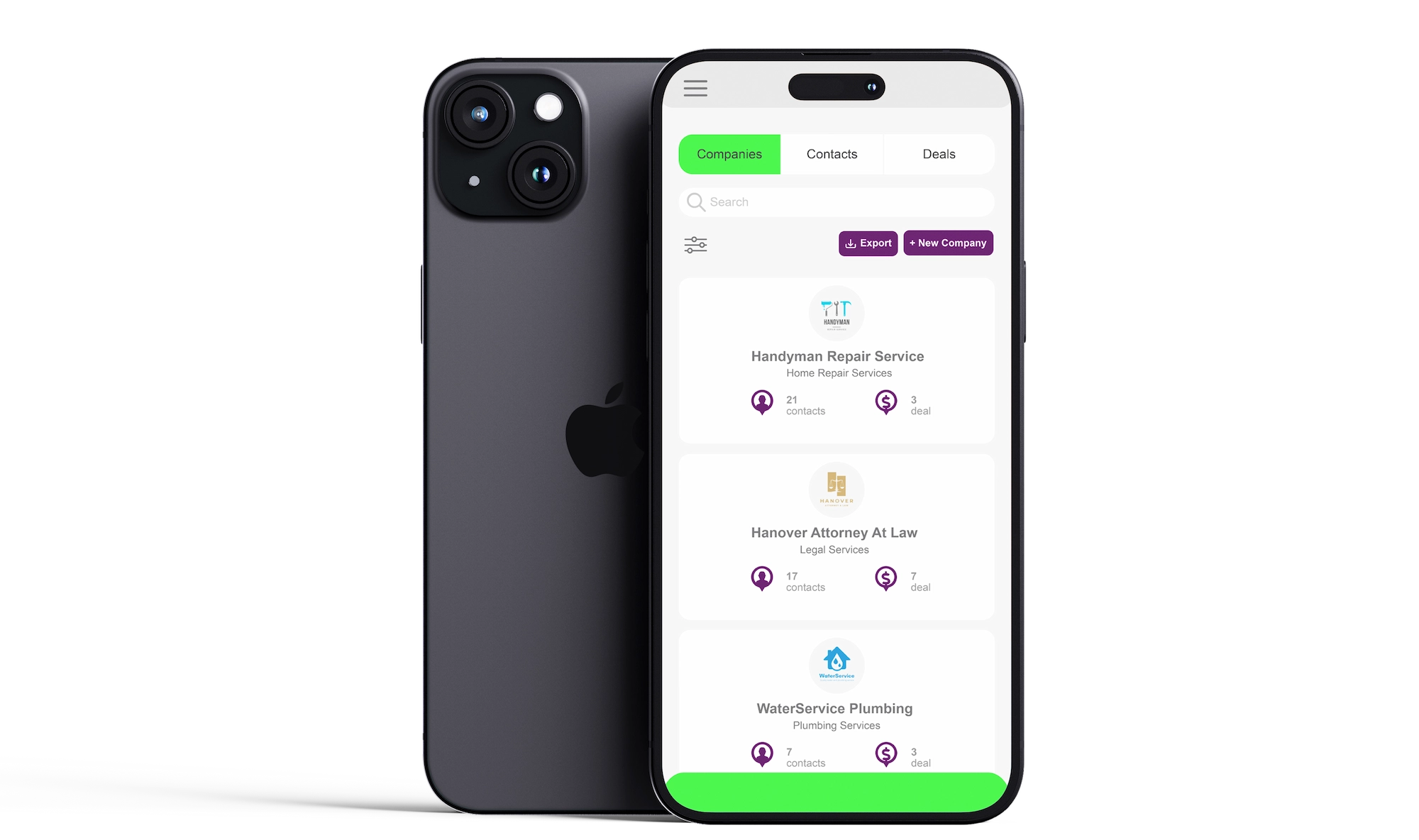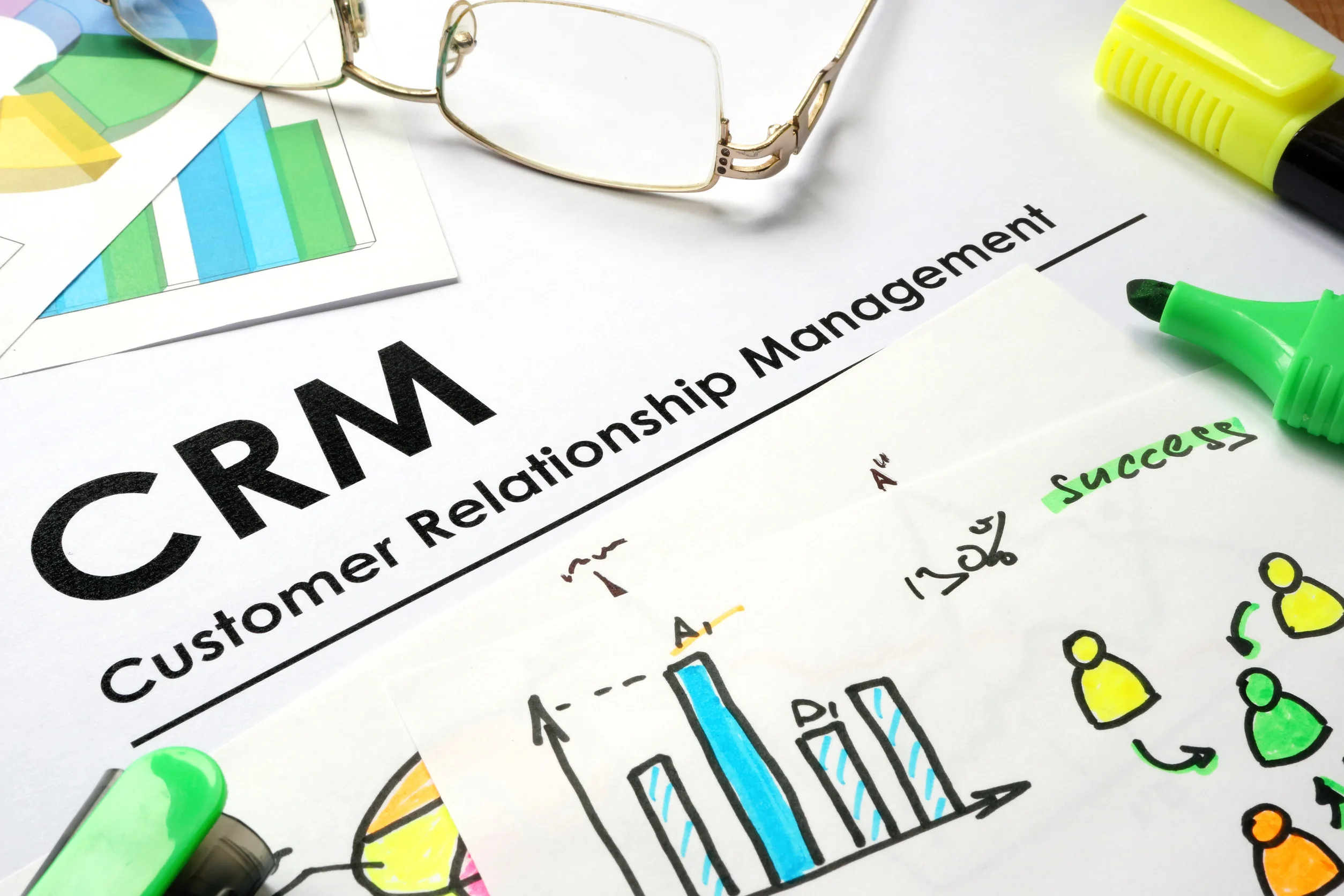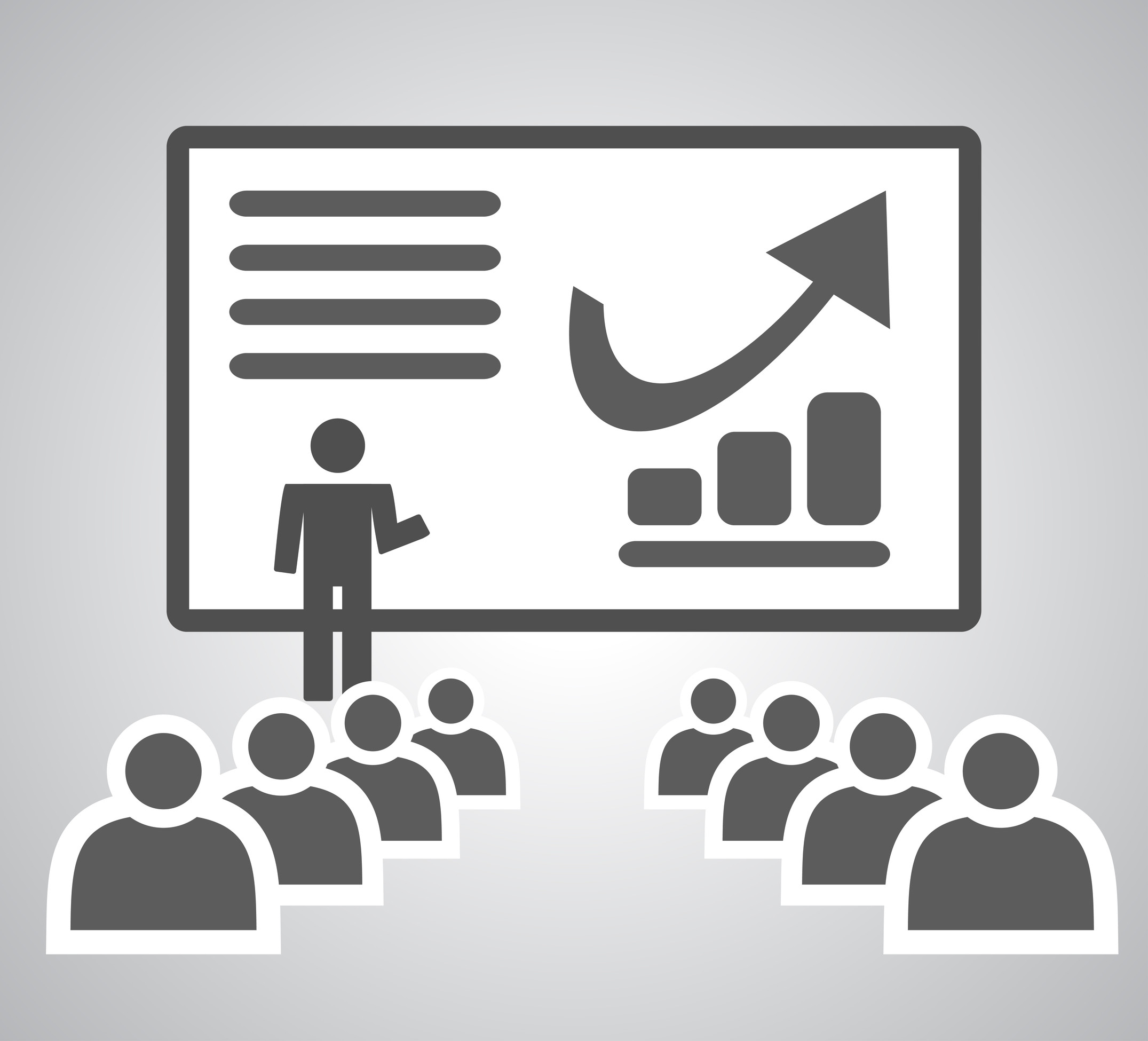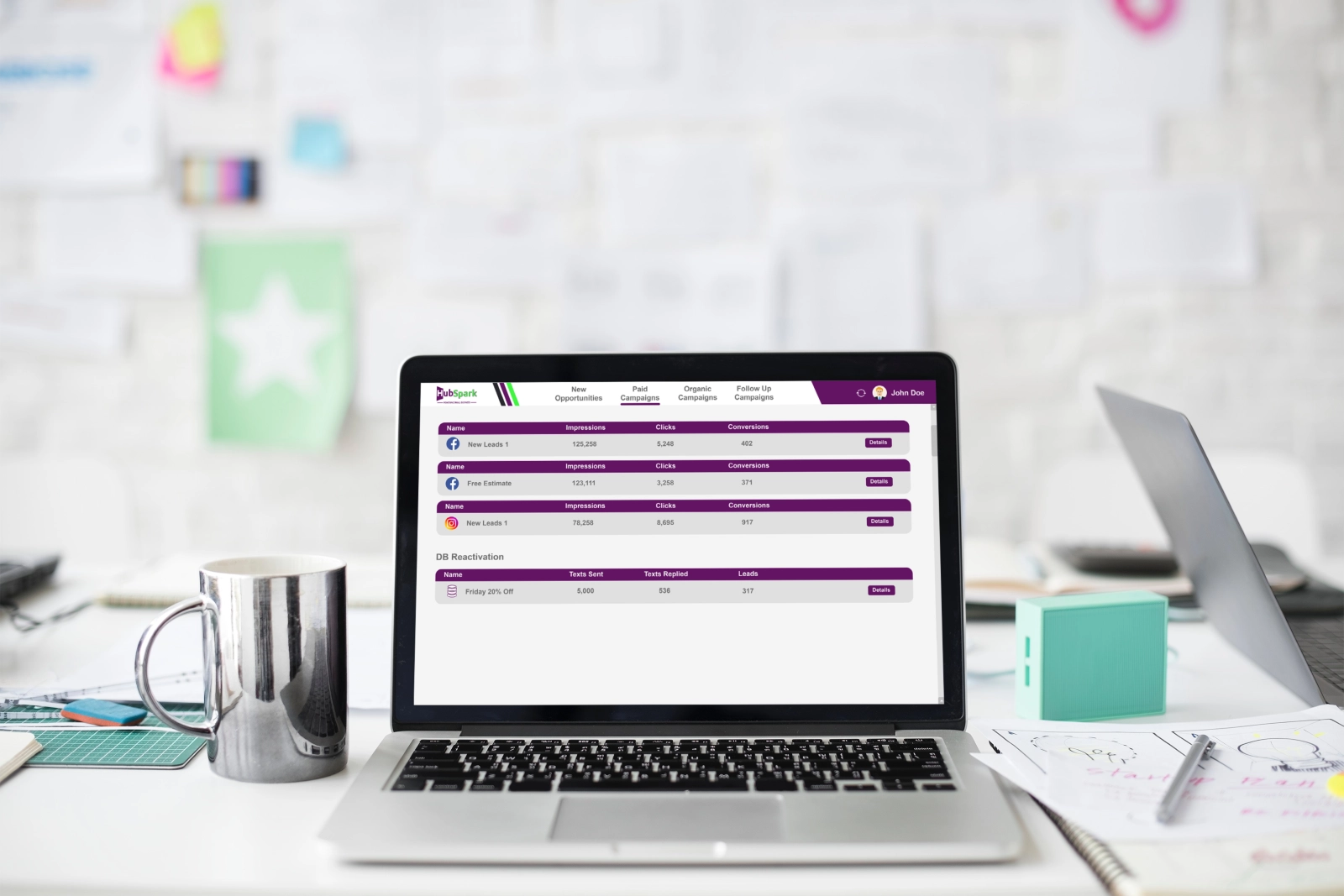How HubSpark Helps with Local SEO for Small Businesses
Key Takeaways
- We know that a CRM is the central nervous system for all client-facing activities, generating one unified database where everyone on your team reaches the same accurate, up-to-date information. This consolidation is the first step in breaking down data silos and encouraging cross-department collaboration.
- For example, research has found that deploying a CRM is essential to simplifying and automating the entire sales pipeline — from lead contact to conversion. We suggest leveraging pipeline visualization and automated workflows to supercharge efficiency — freeing up your sales teams to build relationships and close deals.
- We recommend that you use the powerful data segmentation features in a CRM to drive highly targeted marketing and service interactions. With insight into customer behavior and history, your organization can design personalized experiences that really boost engagement and build long-term loyalty.
- To become better at strategic agility, we recommend leveraging our analytics and reporting feature consistently to be truly data-driven in your decision-making. These insights make it possible to pinpoint trends and market performance with accuracy, allowing your business to fine tune its strategies with confidence.
- We think that for a CRM to succeed, it can’t just be about the technology. It requires a deeper organizational mindset shift toward customer-centricity. This philosophy puts the customer at center stage and aligns every business process to create superior value and service.
- To ensure a successful roll out, we recommend a strategic deployment approach starting with setting clear goals, through meticulous data migration and team training. By beginning with core functions and iteratively extending system use, this will help ease the conversion an

A CRM system is a technology we use for managing all of your company’s relationships and interactions with customers. Experience with these platforms demonstrates they assist in centralizing customer data, which makes business processes improved.
For sales teams, this data is vital to knowing what customers want and enhancing how they engage with them. We’ll display the key features and metrics we think most valuable to you for analysis in this section.
Our HubSpark CRM was specifically designed with user-friendliness in mind, making it accessible for businesses of all sizes. HubSpark not only simplifies the management of customer relationships but also enhances overall efficiency. One of the standout features of HubSpark is its seamless integration with our unified inbox, allowing users to consolidate communications from various channels into one easy-to-navigate location. This means that whether you’re receiving emails, social media messages, or chat inquiries, everything is organized in one place, reducing the time spent switching between different applications.
In addition to the unified inbox, HubSpark also includes powerful a Marketing module designed to help businesses effectively target and engage potential customers. Our HubSpark Marketing module allows companies to create personalized campaigns, track customer interactions, and analyze data to better understand consumer behavior. By leveraging these insights, businesses can tailor their strategies to meet the specific needs and preferences of their audience. This targeted approach not only drives revenue but also helps expand market reach, making it easier for businesses to connect with prospective customers who are genuinely interested in their products or services. With HubSpark CRM, businesses can streamline their operations, enhance customer satisfaction, and ultimately foster growth in a competitive market.

What is a CRM?
Put simply, a CRM is a type of software that businesses use to handle all their business’ interactions with both current and potential customers. Consider it the hub for every scrap of information about the people you do business with. The primary goal of a CRM system is the integration and automation of key business functions: sales, marketing, and customer support.
By integrating these departments under one online umbrella, you receive a consolidated perspective of the entire customer experience. This isn’t a novel concept – it dates back to the early 1970s where companies would use annual surveys and inquiries from front-line staff to measure customer satisfaction. Today’s CRM software is a lot more than that — it’s a dynamic, real-time database.
You should use CRM software to manage customer information, simplify interaction, and ultimately enhance your commercial relationships. For example, when a sales prospect reaches out to you, the CRM records their information, the context of their inquiry, and all subsequent discussions. This record is then available to your sales, marketing and support teams.
This shared access guarantees that anyone who touches the customer has the complete context, allowing you to deliver a consistent, personalized experience. Advanced CRM software typically lives in the cloud these days, so your teams can retrieve important customer information anytime, anywhere, on any device. This flexibility is crucial for a worldwide and mobile workforce.
The whole point of a CRM is to improve customer relationships that generate durable business growth. By mining the info you collect, you can spot trends, anticipate client desires and customize our pitch. For instance, you can develop within the system a complete definition of a specific type of customer — a customer profile.
This lets you target your audience in more useful campaigns. By being customer-centric via your CRM, you work directly toward better customer lifetime value. It enables you to not only win new clients, but keep them by increasing client satisfaction and loyalty through more personalized, data-driven interactions.

Why Your Business Needs a CRM
After all, at the heart of any sales-driven business is a CRM system. We’ve found that with a CRM, teams have access to real-time performance data that’s essential to making nimble, informed decisions. It enables a business to automate and optimize important workflows, saving precious time and resources. By recording each customer interaction, a business can identify their particular opportunities and tune their strategy accordingly.
1. Centralized Data
A CRM platform consolidates all of your customer information into one centralized database. This repository is the only truth for customer data.
This configuration makes certain that everyone on your team, from sales to marketing to service, is viewing the very same data. It puts an end to data silos and messy spreadsheets.
With just one database, sales and tech support teams can access and update customer data in real time. This enhances data integrity and reduces the mistakes that result from utilizing multiple, out-of-sync sources.
2. Streamlined Sales
Businesses should embrace a CRM for scrupulously tracking every customer touchpoint and sales activity, from initial contact through deal closure. This visibility is critical, as it enables sales teams to track the entire sales pipeline and predict revenue accurately.
The system’s automation capabilities simplify many sales activities – from follow up emails to task scheduling – making your team more efficient. By eliminating repetitive administrative tasks, your sales reps can concentrate on high-value activities.
This allows them to focus on the most likely leads and close deals quicker, which helps fuel your growth, an outcome more than half of all businesses anticipate when adopting a CRM.
3. Personalized Marketing
A CRM is the power behind targeted marketing campaigns because it allows businesses to segment your customer base with great precision. You can segment customers by their buying habits, behavior and demographics.
This segmentation allows you to send tailored communication. You can create messages that resonate to the specific concerns of each segment.
This integration with marketing automation systems makes your marketing more efficient and effective. You will notice enhanced customer engagement and loyalty, which is logical as 80% of consumers prefer to purchase from a company that delivers a great customer experience.
4. Better Service
A CRM provides your service team with a 360-degree view of each customer. That means their whole history with your business, from purchases to support tickets.
With this context, you are able to offer customers more considerate and customized service. You can monitor a customer’s journey, providing assistance where it’s needed most and automating to solve frequent problems.
5. Informed Decisions
A CRM provides reports on sales, marketing campaigns and customer activity. This isn’t simply data, it’s organized information. These reports give you intelligent insights that steer your strategic decision-making. It gives you a chance to find what’s most important to your customer and how to best enhance and optimize your services.
Essential CRM Features
To do customer relationship management well, we’ve discovered that a good CRM requires a fundamental set of features. These are not bells and whistles — these features are the fuel that powers streamlined workflows and efficiency. They collaborate to forge a singular customer perspective, allowing your teams to transition from responsive issue resolution to anticipatory rapport cultivation. From sales to marketing and service, every feature matters.

Contact Management
At the most basic level, a CRM is an advanced contact management system that organizes all information about your customers. Contact management is the foundational layer, a central repository for it all — everything from the bare minimum of contact information and company affiliation to rich interaction logs and purchase history.
This allows any team member to pull up a full customer profile at a moment’s notice, which is important for providing seamless, informed service. By monitoring each touchpoint — an email, a support ticket, a social media message — you can create a thorough understanding of the customer’s path.
It is this centralized store of data that directly increases your ability to personalize. For example, when a customer calls, your service team can instantly view their purchase history and prior support requests, enabling a more contextual and timely dialogue. This insight means less reiteration for your customers and a more positive connection.
Pipeline Visualization
Businesses depend on pipeline visualization to illuminate your sales process. This gives you a visual overview of exactly where each deal is in the pipeline, typically laid out in stages such as ‘Initial Contact’, ‘Qualification’, ‘Proposal Sent’, ‘Negotiation’, etc.
This visual methodology enables your sales managers to monitor advancement at a glance, detect prospective choke points where deals are bogged down, and predict income more precisely. For instance, if you see several deals stalled in proposal, this indicates a need to reevaluate your proposal approach or equip the team with new ammunition.
Being able to tailor these stages to your particular sales cycle is crucial. Moreover, by combining task management functionality, your sales reps can assign and monitor tasks right inside the pipeline view. This guarantees that follow-up isn’t ever overlooked.
Workflow automation can be triggered as a deal progresses from stage to stage — for example, automatically sending a follow-up email or scheduling a meeting — which drastically increases sales effectiveness and process compliance.
Communication History
A comprehensive and accessible communication history is crucial for contextual customer interactions. The HuBSpark CRM records each email, call, meeting note or support ticket related to a contact and generates one single timeline of the full relationship.
This single record offers rich context to whichever team member interacts with the customer. It breaks down information silos, making certain your teams stay in lockstep. This is the foundation of personal, effective customer service.

Marketing Integration
To do customer relationship management well, we’ve discovered that a good CRM requires a fundamental set of features. These are not bells and whistles — these features are the fuel that powers streamlined workflows and efficiency. They collaborate to forge a singular customer perspective, allowing your teams to transition from responsive issue resolution to anticipatory rapport cultivation. From sales to marketing and service, every feature matters.

Beyond Software: A CRM Mindset
Think of a CRM as a software package, something you purchase to organize contacts and sales funnels. This perspective, though, is restrictive. We’ve discovered that many professionals are not extracting the full value from their systems because they approach it as a basic database. In fact, a successful CRM strategy is based on a mindset, a business philosophy that puts the customer at the center of everything.
It’s this customer orientation that actually fuels growth. It demands a cultural change in your organization, from an inward focus on internal processes to valuing the lifetime worth of every customer relationship. Which means every team, from marketing to support, must align its goals with creating a better customer experience.
Adopting this mindset helps you overcome a common problem: underutilization. Industry data indicates that users tend to leverage roughly 30% of any software’s potential. A CRM mindset prompts you to see beyond simple functionality and inquire how the system can facilitate a deeper customer insight.
You begin to view a CRM not as a document database but as a customer intelligence center. To construct this intelligence, you need to merge statistics from diverse sources. A real single view of the customer is not often contained in one application. A CRM must pull data from marketing automation, e-commerce, and customer service platforms.
Such integration is a technical hurdle, requiring planning around data safety and compatibility, but it’s crucial for building a truthful and holistic customer profile. This macro perspective enables you to approach kaizen. With a more holistic view of your customer, you will be able to tailor your business more effectively.
For example, you might discover that a particular customer segment responds best through email, social or direct calls — and customize your outreach. Producing this 360-degree view is no trivial matter — it demands a deliberate approach to data gathering and analysis.
It’s a continuing process of listening, learning and polishing your strategy. By seeing CRM as a mindset, you pledge to grow and change with your customers – keeping what you do always timely, and your relationships robust.
Implementing a CRM
Implementing a CRM needs a blueprint — a plan to help your tech team configure your new CRM and roll it out smoothly. Start with goals, and involve the teams who will be using the system on a daily basis. You will discover that beginning with the most time-consuming and painful tasks first is essential.
With an emphasis on a phased approach, you control complexity and generate momentum. This ensures that the CRM supports your changing business needs from day one.

Simple Setup
If anything, a successful CRM implementation depends on an intelligent and streamlined setup process customized to our unique operational workflows. You start by setting up the system’s underlying structure to reflect your sales pipeline, customer service, and marketing funnels. This way, the tool supports your team, rather than forcing them into a process.
This includes optimizing fields, stages, and automation rules. You set up user roles early on, a key measure for data security and compliance that ensures team members only have access to information pertinent to their responsibilities.
A properly configured CRM system is not just easier to use; it significantly increases the reliability of the data you capture and measure.
Team Adoption
To make sure your new CRM is a natural fit in your day-to-day work, you should emphasize team adoption with thorough training and ongoing support. You should discover that offering a tool is not sufficient; you have to illustrate the tangible advantages for each user.
By running biz scenarios in front of a full rollout, you can demonstrate to team members how the CRM streamlines their specific tasks, cuts down on manual entry, and provides insights that actually make their jobs easier.
Involving the end-users from the beginning to receive their feedback is important. This collaborative approach creates ownership. You should emphasize the importance of consistent use throughout the organization and support this by making the CRM the one source of truth for all customer communications, which encourages utilization and value.
Data Migration
Moving your existing customer data into a new CRM is a crucial stage that requires attention to detail and careful planning. Your initial move is invariably to scrub and authenticate the source data. That’s why you clean it first — removing duplicates, fixing inaccuracies, and standardizing formats — before a single transfer starts.
This work is important because our data quality will make or break the effectiveness of the CRM. If it’s inaccurate, insights and decisions will similarly be flawed.
You conduct the migration in phases — typically with a smaller, non-critical data set to begin with — to see what works. This caution prevents you from making mistakes and makes the implementation transition smoother.
Clean data is the heart of a mighty CRM, empowering you to craft compelling customer connections and fuel expansion.

The Future of CRM Client Management
You should view the future of client management as this massive pivot, leaving behind tracking-based solutions and stepping into platforms that generate jaw-dropping, hyper-personalized experiences. The truth is that much of the fundamental technology and design philosophy employed in client management currently is more than twenty years old. There’s a new way to do this that better supports your end-to-end process needs.
The future of client management will be defined by the evolution of these systems and how you succeed in meeting your customers’ changing needs and expectations. Logging interactions is no longer sufficient; you must anticipate customer needs before they arise, providing deeply personalized interaction at each touch point.
To do this, you’re turning to the future of technology — Artificial Intelligence and the Internet of Things — to fuel your next wave of client management. AI algorithms will let you sift through oceans of data so you can send dynamic content specific to a particular customer’s preferences and real-time behaviors.
It’s like having a CRM which doesn’t just know what a client has bought, but predicts what they’ll need next, based on marketplace trends and last service interaction. This shift demands a mobile-first approach, enabling your sales and support teams to pull up customer information and sales tools straight from their smartphone or tablet, equipped with whatever context they need for any client discussion, wherever.
One of the keys to this forward-looking model is a single source of truth for all of your client data. When your team has access to the entire consistent story in a single platform, you are able to give a truly integrated customer experience — free of the friction of siloed information.
As you gather more granular data, your concern with data privacy and security needs to increase. You know that trust is everything, and that safeguarding client data is more than a compliance checklist – it’s part of the customer relationship. You have to be open about data usage too and use robust security measures.

Start Using the HubSpark CRM Today to Grow Your Business!
We believe a CRM is not just a tool. It’s fundamental to how we establish and maintain customer confidence. Our experience demonstrates that quality data guides intelligent decisions. The HubSpark CRM system helps capture that data. It centralizes all customer information. This makes your business hum. For instance, your sales team can view a client’s previous problems prior to a call. This results in a deeper conversation and a tighter connection. We think this client-centric focus is what will fuel the future growth.
Our HubSpark CRM seamlessly integrates with our unified inbox and Marketing module, providing businesses with a comprehensive solution to manage customer communication efficiently. This integration allows users to see all customer interactions in one place, which makes it easier to track conversations and respond promptly. By having everything organized, businesses can ensure that no messages slip through the cracks, enhancing customer satisfaction and loyalty.
In addition to organizing communication, our CRM automates follow-ups with our Marketing module, which means you can set reminders to reach out to customers after a sale or inquiry. This feature helps maintain relationships without the need for manual tracking. Furthermore, the Marketing module allows businesses to create targeted promotions based on customer data, ensuring that marketing efforts are not just random but tailored to what customers are most interested in.
With features like email campaigns, social media management, and analytics, HubSpark CRM empowers businesses to engage their audience effectively. You can analyze which promotions are working best by looking at engagement metrics, helping you make informed decisions for future marketing strategies. Overall, integrating our HubSpark CRM and using our unified inbox and Marketing module streamlines operations, enhances customer interactions, and ultimately drives business growth.
Come be a part of the HubSpark community. Share your own client adventures and grow with HubSpark. Contact us today to get started building out your customer relationships with HubSpark’s innovative platform.
Frequently Asked Questions
A CRM, or customer relationship management, is how a business manages all of your company’s relationships and interactions with customers and potential customers. It keeps a business in order, makes you more profitable, and lets you expand.
No, a CRM is for companies both big and small. Even smaller companies particularly gain an advantage from structuring client data early on. It helps you build good relationships from the ground up and scale with ease.
The greatest advantage noticed is having all customer information in a centralized location. This enables your teams to have fresh data, insight into your customers’ needs, and offer a more personalized consistent experience.
No! HubSpark CRM is a straightforward, easy-to-use interface that anyone can pick up in minutes. We think if you can use e-mail or social media, you can use the HubSpark CRM.
Yes, of course. The HubSpark CRM, helps with marketing, customer communication, and customer service. HubSpark enables you to run marketing campaigns, log service issues, and optimize the complete customer journey — not just the sale.

Request a Free Demo
(no credit card required)
- Key Takeaways
- What is a CRM?
- Why Your Business Needs CRM
- Essential CRM Features
- Beyond Software: A CRM Mindset
- Implementing Your First CRM
- The Future of Client Management
- Conclusion
- Frequently Asked Questions
Key Takeaways
- We know that a CRM is the central nervous system for all client-facing activities, generating one unified database where everyone on your team reaches the same accurate, up-to-date information. This consolidation is the first step in breaking down data silos and encouraging cross-department collaboration.
- For example, research has found that deploying a CRM is essential to simplifying and automating the entire sales pipeline — from lead contact to conversion. We suggest leveraging pipeline visualization and automated workflows to supercharge efficiency — freeing up your sales teams to build relationships and close deals.
- We recommend that you use the powerful data segmentation features in a CRM to drive highly targeted marketing and service interactions. With insight into customer behavior and history, your organization can design personalized experiences that really boost engagement and build long-term loyalty.
- To become better at strategic agility, we recommend leveraging our analytics and reporting feature consistently to be truly data-driven in your decision-making. These insights make it possible to pinpoint trends and market performance with accuracy, allowing your business to fine tune its strategies with confidence.
- We think that for a CRM to succeed, it can’t just be about the technology. It requires a deeper organizational mindset shift toward customer-centricity. This philosophy puts the customer at center stage and aligns every business process to create superior value and service.
- To ensure a successful roll out, we recommend a strategic deployment approach starting with setting clear goals, through meticulous data migration and team training. By beginning with core functions and iteratively extending system use, this will help ease the conversion and provide for the best long-term adoption and ROI.

A CRM system is a technology we use for managing all of your company’s relationships and interactions with customers. Experience with these platforms demonstrates they assist in centralizing customer data, which makes business processes improved.
For sales teams, this data is vital to knowing what customers want and enhancing how they engage with them. We’ll display the key features and metrics we think most valuable to you for analysis in this section.
Our HubSpark CRM was specifically designed with user-friendliness in mind, making it accessible for businesses of all sizes. HubSpark not only simplifies the management of customer relationships but also enhances overall efficiency. One of the standout features of HubSpark is its seamless integration with our unified inbox, allowing users to consolidate communications from various channels into one easy-to-navigate location. This means that whether you’re receiving emails, social media messages, or chat inquiries, everything is organized in one place, reducing the time spent switching between different applications.
In addition to the unified inbox, HubSpark also includes powerful a Marketing module designed to help businesses effectively target and engage potential customers. Our HubSpark Marketing module allows companies to create personalized campaigns, track customer interactions, and analyze data to better understand consumer behavior. By leveraging these insights, businesses can tailor their strategies to meet the specific needs and preferences of their audience. This targeted approach not only drives revenue but also helps expand market reach, making it easier for businesses to connect with prospective customers who are genuinely interested in their products or services. With HubSpark CRM, businesses can streamline their operations, enhance customer satisfaction, and ultimately foster growth in a competitive market.
What is a CRM?

Put simply, a CRM is a type of software that businesses use to handle all their business’ interactions with both current and potential customers. Consider it the hub for every scrap of information about the people you do business with. The primary goal of a CRM system is the integration and automation of key business functions: sales, marketing, and customer support.
By integrating these departments under one online umbrella, you receive a consolidated perspective of the entire customer experience. This isn’t a novel concept – it dates back to the early 1970s where companies would use annual surveys and inquiries from front-line staff to measure customer satisfaction. Today’s CRM software is a lot more than that — it’s a dynamic, real-time database.
You should use CRM software to manage customer information, simplify interaction, and ultimately enhance your commercial relationships. For example, when a sales prospect reaches out to you, the CRM records their information, the context of their inquiry, and all subsequent discussions. This record is then available to your sales, marketing and support teams.
This shared access guarantees that anyone who touches the customer has the complete context, allowing you to deliver a consistent, personalized experience. Advanced CRM software typically lives in the cloud these days, so your teams can retrieve important customer information anytime, anywhere, on any device. This flexibility is crucial for a worldwide and mobile workforce.
The whole point of a CRM is to improve customer relationships that generate durable business growth. By mining the info you collect, you can spot trends, anticipate client desires and customize our pitch. For instance, you can develop within the system a complete definition of a specific type of customer — a customer profile.
This lets you target your audience in more useful campaigns. By being customer-centric via your CRM, you work directly toward better customer lifetime value. It enables you to not only win new clients, but keep them by increasing client satisfaction and loyalty through more personalized, data-driven interactions.
Why Your Business Needs a CRM

After all, at the heart of any sales-driven business is a CRM system. We’ve found that with a CRM, teams have access to real-time performance data that’s essential to making nimble, informed decisions. It enables a business to automate and optimize important workflows, saving precious time and resources. By recording each customer interaction, a business can identify their particular opportunities and tune their strategy accordingly.
1. Centralized Data
A CRM platform consolidates all of your customer information into one centralized database. This repository is the only truth for customer data.
This configuration makes certain that everyone on your team, from sales to marketing to service, is viewing the very same data. It puts an end to data silos and messy spreadsheets.
With just one database, sales and tech support teams can access and update customer data in real time. This enhances data integrity and reduces the mistakes that result from utilizing multiple, out-of-sync sources.
2. Streamlined Sales
Businesses should embrace a CRM for scrupulously tracking every customer touchpoint and sales activity, from initial contact through deal closure. This visibility is critical, as it enables sales teams to track the entire sales pipeline and predict revenue accurately.
The system’s automation capabilities simplify many sales activities – from follow up emails to task scheduling – making your team more efficient. By eliminating repetitive administrative tasks, your sales reps can concentrate on high-value activities.
This allows them to focus on the most likely leads and close deals quicker, which helps fuel your growth, an outcome more than half of all businesses anticipate when adopting a CRM.
3. Personalized Marketing
A CRM is the power behind targeted marketing campaigns because it allows businesses to segment your customer base with great precision. You can segment customers by their buying habits, behavior and demographics.
This segmentation allows you to send tailored communication. You can create messages that resonate to the specific concerns of each segment.
This integration with marketing automation systems makes your marketing more efficient and effective. You will notice enhanced customer engagement and loyalty, which is logical as 80% of consumers prefer to purchase from a company that delivers a great customer experience.
4. Better Service
A CRM provides your service team with a 360-degree view of each customer. That means their whole history with your business, from purchases to support tickets.
With this context, you are able to offer customers more considerate and customized service. You can monitor a customer’s journey, providing assistance where it’s needed most and automating to solve frequent problems.
5. Informed Decisions
A CRM provides reports on sales, marketing campaigns and customer activity. This isn’t simply data, it’s organized information. These reports give you intelligent insights that steer your strategic decision-making. It gives you a chance to find what’s most important to your customer and how to best enhance and optimize your services.
Essential CRM Features

To do customer relationship management well, we’ve discovered that a good CRM requires a fundamental set of features. These are not bells and whistles — these features are the fuel that powers streamlined workflows and efficiency. They collaborate to forge a singular customer perspective, allowing your teams to transition from responsive issue resolution to anticipatory rapport cultivation. From sales to marketing and service, every feature matters.
Contact Management
At the most basic level, a CRM is an advanced contact management system that organizes all information about your customers. Contact management is the foundational layer, a central repository for it all — everything from the bare minimum of contact information and company affiliation to rich interaction logs and purchase history.
This allows any team member to pull up a full customer profile at a moment’s notice, which is important for providing seamless, informed service. By monitoring each touchpoint — an email, a support ticket, a social media message — you can create a thorough understanding of the customer’s path.
It is this centralized store of data that directly increases your ability to personalize. For example, when a customer calls, your service team can instantly view their purchase history and prior support requests, enabling a more contextual and timely dialogue. This insight means less reiteration for your customers and a more positive connection.
Pipeline Visualization
Businesses depend on pipeline visualization to illuminate your sales process. This gives you a visual overview of exactly where each deal is in the pipeline, typically laid out in stages such as ‘Initial Contact’, ‘Qualification’, ‘Proposal Sent’, ‘Negotiation’, etc.
This visual methodology enables your sales managers to monitor advancement at a glance, detect prospective choke points where deals are bogged down, and predict income more precisely. For instance, if you see several deals stalled in proposal, this indicates a need to reevaluate your proposal approach or equip the team with new ammunition.
Being able to tailor these stages to your particular sales cycle is crucial. Moreover, by combining task management functionality, your sales reps can assign and monitor tasks right inside the pipeline view. This guarantees that follow-up isn’t ever overlooked.
Workflow automation can be triggered as a deal progresses from stage to stage — for example, automatically sending a follow-up email or scheduling a meeting — which drastically increases sales effectiveness and process compliance.
Communication History
A comprehensive and accessible communication history is crucial for contextual customer interactions. The HuBSpark CRM records each email, call, meeting note or support ticket related to a contact and generates one single timeline of the full relationship.
This single record offers rich context to whichever team member interacts with the customer. It breaks down information silos, making certain your teams stay in lockstep. This is the foundation of personal, effective customer service.
Marketing Integration

Smooth integration between our CRM and Marketing automation platform, for example, is essential to ensuring sales and marketing alignment. This integration enables you to tie in rich CRM data such as purchase history and level of engagement for very targeted campaigns.
HubSpark uses native segmentation tools to segment contacts to lists, allowing you to send different email sequences that are relevant for each audience. This ability turns your marketing from mass-broadcast monologues into targeted, pertinent dialogues — the cornerstone of successful lead generation and nurturing.
By following campaign results and attributing revenue to specific marketing activities within the CRM, you have transparency into your ROI and can constantly refine your efforts.
Beyond Software: A CRM Mindset

Think of a CRM as a software package, something you purchase to organize contacts and sales funnels. This perspective, though, is restrictive. We’ve discovered that many professionals are not extracting the full value from their systems because they approach it as a basic database. In fact, a successful CRM strategy is based on a mindset, a business philosophy that puts the customer at the center of everything.
It’s this customer orientation that actually fuels growth. It demands a cultural change in your organization, from an inward focus on internal processes to valuing the lifetime worth of every customer relationship. Which means every team, from marketing to support, must align its goals with creating a better customer experience.
Adopting this mindset helps you overcome a common problem: underutilization. Industry data indicates that users tend to leverage roughly 30% of any software’s potential. A CRM mindset prompts you to see beyond simple functionality and inquire how the system can facilitate a deeper customer insight.
You begin to view a CRM not as a document database but as a customer intelligence center. To construct this intelligence, you need to merge statistics from diverse sources. A real single view of the customer is not often contained in one application. A CRM must pull data from marketing automation, e-commerce, and customer service platforms.
Such integration is a technical hurdle, requiring planning around data safety and compatibility, but it’s crucial for building a truthful and holistic customer profile. This macro perspective enables you to approach kaizen. With a more holistic view of your customer, you will be able to tailor your business more effectively.
For example, you might discover that a particular customer segment responds best through email, social or direct calls — and customize your outreach. Producing this 360-degree view is no trivial matter — it demands a deliberate approach to data gathering and analysis.
It’s a continuing process of listening, learning and polishing your strategy. By seeing CRM as a mindset, you pledge to grow and change with your customers – keeping what you do always timely, and your relationships robust.
Implementing a CRM

Implementing a CRM needs a blueprint — a plan to help your tech team configure your new CRM and roll it out smoothly. Start with goals, and involve the teams who will be using the system on a daily basis. You will discover that beginning with the most time-consuming and painful tasks first is essential.
With an emphasis on a phased approach, you control complexity and generate momentum. This ensures that the CRM supports your changing business needs from day one.
Simple Setup
If anything, a successful CRM implementation depends on an intelligent and streamlined setup process customized to our unique operational workflows. You start by setting up the system’s underlying structure to reflect your sales pipeline, customer service, and marketing funnels. This way, the tool supports your team, rather than forcing them into a process.
This includes optimizing fields, stages, and automation rules. You set up user roles early on, a key measure for data security and compliance that ensures team members only have access to information pertinent to their responsibilities.
A properly configured CRM system is not just easier to use; it significantly increases the reliability of the data you capture and measure.
Team Adoption
To make sure your new CRM is a natural fit in your day-to-day work, you should emphasize team adoption with thorough training and ongoing support. You should discover that offering a tool is not sufficient; you have to illustrate the tangible advantages for each user.
By running biz scenarios in front of a full rollout, you can demonstrate to team members how the CRM streamlines their specific tasks, cuts down on manual entry, and provides insights that actually make their jobs easier.
Involving the end-users from the beginning to receive their feedback is important. This collaborative approach creates ownership. You should emphasize the importance of consistent use throughout the organization and support this by making the CRM the one source of truth for all customer communications, which encourages utilization and value.
Data Migration
Moving your existing customer data into a new CRM is a crucial stage that requires attention to detail and careful planning. Your initial move is invariably to scrub and authenticate the source data. That’s why you clean it first — removing duplicates, fixing inaccuracies, and standardizing formats — before a single transfer starts.
This work is important because our data quality will make or break the effectiveness of the CRM. If it’s inaccurate, insights and decisions will similarly be flawed.
You conduct the migration in phases — typically with a smaller, non-critical data set to begin with — to see what works. This caution prevents you from making mistakes and makes the implementation transition smoother.
Clean data is the heart of a mighty CRM, empowering you to craft compelling customer connections and fuel expansion.
The Future of CRM Client Management

You should view the future of client management as this massive pivot, leaving behind tracking-based solutions and stepping into platforms that generate jaw-dropping, hyper-personalized experiences. The truth is that much of the fundamental technology and design philosophy employed in client management currently is more than twenty years old. There’s a new way to do this that better supports your end-to-end process needs.
The future of client management will be defined by the evolution of these systems and how you succeed in meeting your customers’ changing needs and expectations. Logging interactions is no longer sufficient; you must anticipate customer needs before they arise, providing deeply personalized interaction at each touch point.
To do this, you’re turning to the future of technology — Artificial Intelligence and the Internet of Things — to fuel your next wave of client management. AI algorithms will let you sift through oceans of data so you can send dynamic content specific to a particular customer’s preferences and real-time behaviors.
It’s like having a CRM which doesn’t just know what a client has bought, but predicts what they’ll need next, based on marketplace trends and last service interaction. This shift demands a mobile-first approach, enabling your sales and support teams to pull up customer information and sales tools straight from their smartphone or tablet, equipped with whatever context they need for any client discussion, wherever.
One of the keys to this forward-looking model is a single source of truth for all of your client data. When your team has access to the entire consistent story in a single platform, you are able to give a truly integrated customer experience — free of the friction of siloed information.
As you gather more granular data, your concern with data privacy and security needs to increase. You know that trust is everything, and that safeguarding client data is more than a compliance checklist – it’s part of the customer relationship. You have to be open about data usage too and use robust security measures.
Start Using the HubSpark CRM Today to Grow Your Business!

We believe a CRM is not just a tool. It’s fundamental to how we establish and maintain customer confidence. Our experience demonstrates that quality data guides intelligent decisions. The HubSpark CRM system helps capture that data. It centralizes all customer information. This makes your business hum. For instance, your sales team can view a client’s previous problems prior to a call. This results in a deeper conversation and a tighter connection. We think this client-centric focus is what will fuel the future growth.
Our HubSpark CRM seamlessly integrates with our unified inbox and Marketing module, providing businesses with a comprehensive solution to manage customer communication efficiently. This integration allows users to see all customer interactions in one place, which makes it easier to track conversations and respond promptly. By having everything organized, businesses can ensure that no messages slip through the cracks, enhancing customer satisfaction and loyalty.
In addition to organizing communication, our CRM automates follow-ups with our Marketing module, which means you can set reminders to reach out to customers after a sale or inquiry. This feature helps maintain relationships without the need for manual tracking. Furthermore, the Marketing module allows businesses to create targeted promotions based on customer data, ensuring that marketing efforts are not just random but tailored to what customers are most interested in.
With features like email campaigns, social media management, and analytics, HubSpark CRM empowers businesses to engage their audience effectively. You can analyze which promotions are working best by looking at engagement metrics, helping you make informed decisions for future marketing strategies. Overall, integrating our HubSpark CRM and using our unified inbox and Marketing module streamlines operations, enhances customer interactions, and ultimately drives business growth.
Come be a part of the HubSpark community. Share your own client adventures and grow with HubSpark. Contact us today to get started building out your customer relationships with HubSpark’s innovative platform.
Frequently Asked Questions

What is a CRM system, really?
A CRM, or customer relationship management, is how a business manages all of your company’s relationships and interactions with customers and potential customers. It keeps a business in order, makes you more profitable, and lets you expand.
Is a CRM only for big companies?
No, a CRM is for companies both big and small. Even smaller companies particularly gain an advantage from structuring client data early on. It helps you build good relationships from the ground up and scale with ease.
What’s the main benefit of using a CRM?
The greatest advantage noticed is having all customer information in a centralized location. This enables your teams to have fresh data, insight into your customers’ needs, and offer a more personalized consistent experience.
Do I need technical skills to use the HubSpark CRM?
No! HubSpark CRM is a straightforward, easy-to-use interface that anyone can pick up in minutes. We think if you can use e-mail or social media, you can use the HubSpark CRM.
Can HubSpark CRM help with more than just sales?
Yes, of course. The HubSpark CRM, helps with marketing, customer communication, and customer service. HubSpark enables you to run marketing campaigns, log service issues, and optimize the complete customer journey — not just the sale.

 Demo
Demo